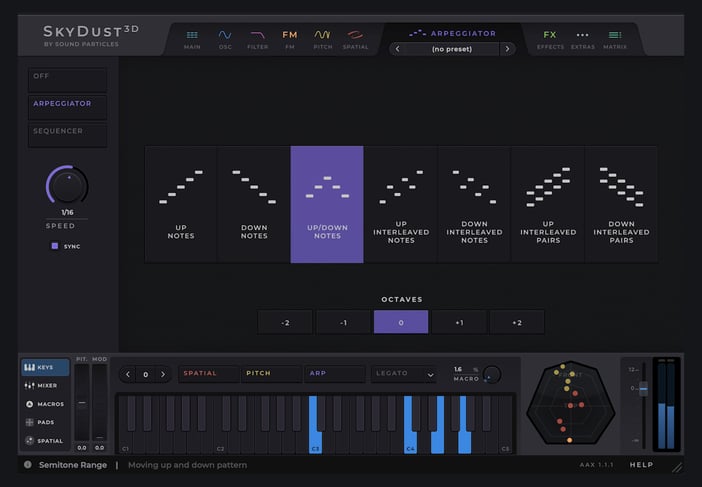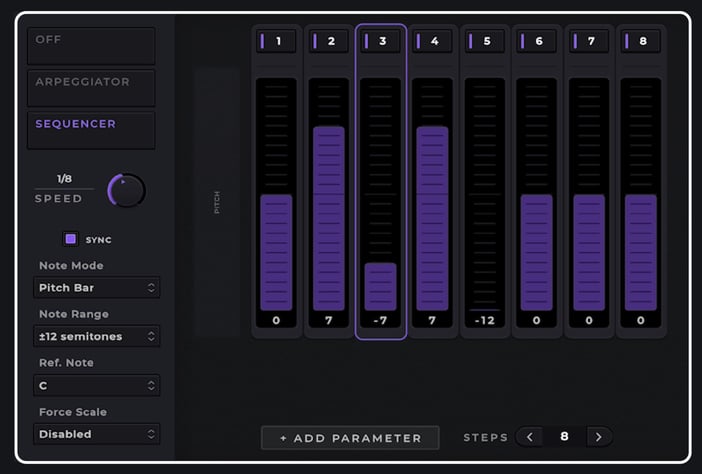Welcome to the Synth Tutorial series! If you're new to the world of synthesizers or just getting started with our SkyDust 3D, you're in the right place. In this series, we'll walk you through the fundamentals of sound synthesis using our SkyDust 3D. This article is dedicated to get Sequencers explained. You can access the last article here LFOs Explained.
What are Sequencers and Arpeggiators?
Before we delve into the differences of Sequencers and Arpeggiators, let's first understand what sequencers and arpeggiators actually are. In essence, both are ways of creating arpeggios with your synthesizer. Arpeggios are those captivating sequences of notes that add movement and depth to your sounds, often heard in electronic and ambient music.
Arpeggiators: The Easiest Way to Start
Arpeggiators are a great starting point for those new to the concept. They allow you to play a chord or a series of notes, and then the arpeggiator takes over, transforming them into captivating patterns. You can choose from various preset patterns, such as ascending, descending, or a combination of both. Within SkyDust you have 7 presets available.
Additionally, many arpeggiators enable you to adjust the speed or sync them to the tempo of your project, ensuring that your arpeggios fit seamlessly into your music. Some arpeggiators even allow you to add multiple octaves to create a more complex and harmonically rich sound.

Sequencers: Flexibility and Customization
While arpeggiators are easy to use and can yield fantastic results, they do have limitations. This is where sequencers step in to offer a more customizable and flexible approach. Sequencers work by creating a sequence of notes that are played in succession, and they give you more control over each individual note.
With sequencers, you can define the exact notes, their durations, and even add automation for various parameters, such as pitch, filters, resonance, and more. This level of precision allows you to craft intricate melodies, unique patterns, and interesting textures that truly showcase your creativity.

The Intuitive Approach
Many sequencers, such as one inside SkyDust, also provide an intuitive interface, often presented as a keyboard layout, making it easy to visualize and create melodies in a familiar way. By using this interface, you can quickly jump to different notes and avoid getting lost in complex pitch calculations.
One particularly exciting feature of sequencers is their ability to be polyphonic. Traditionally, synthesizers were monophonic, capable of playing only one note at a time. However, with polyphonic sequencers, you can create sequences for multiple notes simultaneously, opening up a whole new world of sonic exploration.

Mastering Sequencers
Sequencers and arpeggiators are invaluable tools that can elevate your music to new heights. Whether you prefer the simplicity of arpeggiators or the creative freedom of sequencers, both can bring unique flavors to your compositions.
In the world of synthesizers, SkyDust stands out with its ability to sequence parameters. This feature opens up endless possibilities, allowing you to precisely control pitch and even automate additional parameters, such as frequency and resonance. With SkyDust's sequencer, you're not just creating arpeggios; you're sculpting soundscapes with remarkable precision and creativity.
Experiment with these features, combine them with various synthesizer parameters, such as filters, and let your imagination run wild. Music production is a journey of discovery, and with sequencers and arpeggiators by your side, you'll unlock a world of endless possibilities.
Once you've mastered Sequencers, move forward to the next tutorial about Pitch with EGs.
See you on the next tutorial!
Stay tuned and join the revolution!
Topics: Sound Particles, Sound Design, Tutorials, 3D audio, Surround Sound, Music, synth, virtual instrument, synthesizer, SkyDust3D

